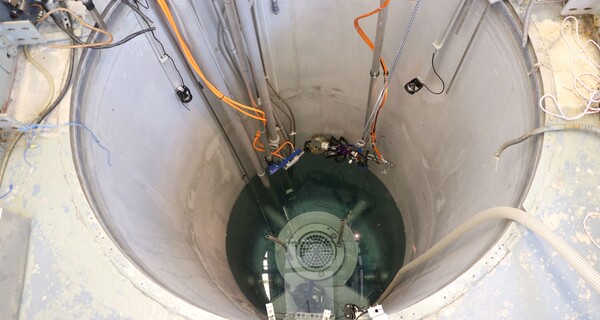FORTUM CORPORATION ONLINE NEWS 18.06.2024
The FiR1 research reactor, which has operated for over fifty years at VTT's premises in Otaniemi, Espoo, has been dismantled. The 250 kilowatt reactor, commissioned in 1962, was used for a wide range of research purposes and also served healthcare sector.
Fortum has carried out Finland's first nuclear decommissioning project together with VTT, the owner of the reactor. Fortum’s responsibilities in the project cover the whole decommissioning work, which consisted of planning, preparatory measures, dismantling of the reactor and waste management, including the final disposal of decommissioning waste classified as radioactive.
Fortum, the main contractor, began dismantling in June 2023 and concluded the work in April 2024. Fortum's work on the project will continue with the final disposal of demolition waste in the Loviisa power plant's final repository for low and intermediate-level waste.
“The dismantling phase was very swift, thanks to thorough planning and preparatory work. Additionally, it was crucial that we could leverage the strong nuclear safety culture and expertise from Fortum's Loviisa nuclear power plant. Fortum handled everything safely, efficiently, and on schedule without significant delays,” says Markus Airila, VTT’s principal scientist, who led the project and served as the decommissioning manager.
“For us at Fortum, this successful project is a testament to our extensive expertise, covering the entire lifecycle of a nuclear facility. We have executed a nuclear facility decommissioning project with the same quality and competence with which we have operated nuclear facilities and delivered projects for external customers over decades,” says Antti Ketolainen, Fortum’s director in charge of the project.
A significant experience for both Fortum and VTT was the preparation of a decommissioning and dismantling plan required for the decommissioning license. Extensive documentation was produced and developed for this purpose.
“We gained a lot of lessons and experience from the FiR1 project, which we can use to develop our operations and support our service business customers, for example, in preparing decommissioning plans and cost estimates,” Ketolainen continues.
Dismantling amid Aalto University's Otaniemi campus posed its safety requirements in organising the dismantling site and the arrangement of necessary waste transports.
As the reactor was designed for research and educational use, the amount of decommissioning waste and the associated radioactivity were relatively small. The total amount of demolition waste to be disposed in Fortum's Loviisa nuclear power plant’s low and intermediate level waste repository was approximately 60 cubic metres, most of which was concrete.
Safety has been an absolute priority during the planning and execution of the plant's decommissioning. Decommissioning has been carried out under the oversight of the Radiation and Nuclear Safety Authority of Finland (STUK).
Fortum Corporation
Communications
Further information:
Antti Ketolainen, Director, Fortum, Decommissioning and Waste, Nuclear Services, +358407518956, antti [dot] ketolainen [at] fortum [dot] com (antti[dot]ketolainen[at]fortum[dot]com)
Markus Airila, Principal Scientist, VTT, +358403508669, markus [dot] airila [at] vtt [dot] fi (markus[dot]airila[at]vtt[dot]fi)
Fortum’s Nuclear Services
Our Nuclear Services has more than 40 years of experience in designing, licensing and operating nuclear facil¬ities and supplying related services and technologies. Our expertise covers the whole life-cycle of nuclear power plants from new builds to decom-mis¬sioning and final disposal of nuclear waste.
